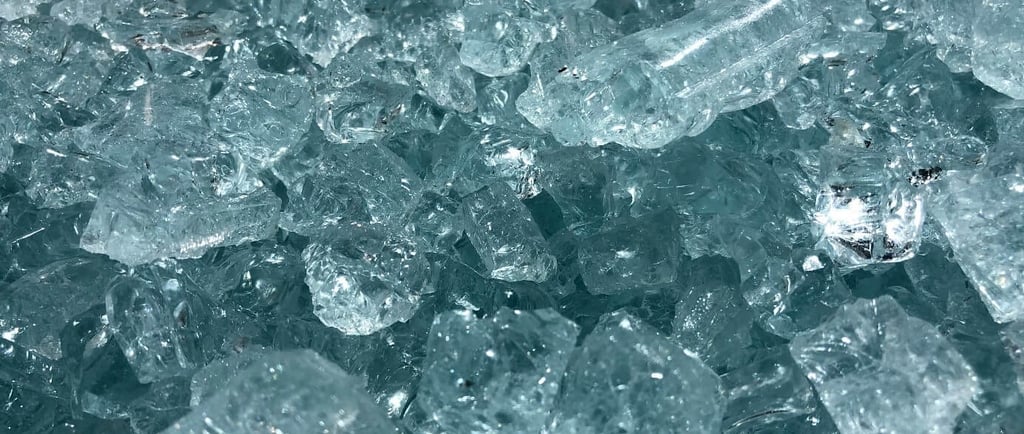Why Silica Sand Quality Matters in Sodium Silicate Manufacturing
The Science Behind Sodium Silicate


The Role of Silica Sand in Sodium Silicate Manufacturing
Sodium silicate (Na₂SiO₃) is produced through a high-temperature reaction between silica sand (SiO₂) and sodium carbonate (Na₂CO₃). The typical production process involves:
Batch Preparation – Precise blending of silica sand and soda ash.
Fusion – Melting the mixture in furnaces at 1,300–1,500°C to create molten sodium silicate.
Cooling and Dissolution – Cooling the melt and dissolving it in water to form liquid or solid sodium silicate.
Why Silica Sand Matters
High Purity (≥98% SiO₂): Reduces impurities like iron and alumina, ensuring product consistency.
Controlled Particle Size (0.1–0.5 mm): Promotes uniform melting and reaction rates.
Thermal Stability: Withstands extreme heat without decomposition.
Key Applications Enabled by Silica Sand-Derived Sodium Silicate
1. Detergents and Cleaners
Acts as a builder and stabilizer, boosting surfactant performance and reducing water hardness.
2. Adhesives and Binders
Used in paperboard production and foundry sand casting as a robust binder.
3. Construction Materials
Enhances concrete durability and provides fireproofing capabilities.
4. Water Treatment
Functions as a coagulant aid to improve flocculation efficiency.
5. Textile and Timber Processing
Serves as a fire retardant for fabrics and a preservative for wood.
Benefits of High-Purity Silica Sand in Production
Consistent Product Quality: Uniform SiO₂ content ensures reproducible batch performance.
Energy Efficiency: Low moisture content (≤1%) reduces furnace energy demands.
Cost Effectiveness: Minimizes slag, lowers furnace wear, and reduces downtime.
Regulatory Compliance: Meets ISO 1689 and ASTM C144 for industrial-grade sodium silicate.
Challenges in Sourcing Silica Sand
To ensure quality sodium silicate, manufacturers demand silica sand with:
Ultra-High Purity (≤0.5% impurities)
Optimized Granulometry (40–70 mesh)
Sustainable Sourcing
Purnomo Silica's Solutions
Advanced Processing: Produces sand with ≥98.5% SiO₂ via washing, drying, and sieving.
Customized Grading: Tailors particle sizes for different furnace types.
Eco-Friendly Practices: Employs responsible mining and carbon-neutral logistics.
Why Manufacturers Choose Purnomo Silica
Exceptional Purity: Ultra-low iron (<0.05%) and high thermal resistance.
Expert Support: Guidance on achieving specific silicate modulus ratios (e.g., 2.0–3.2).
Reliable Distribution: Global logistics to Asia, Europe, and North America.
Certifications: REACH, FDA (for food-grade), and ISO 9001 compliant.
Frequently Asked Questions (FAQs)
Q: What sand grade is ideal for liquid sodium silicate?
A: 50–70 mesh sand ensures quick dissolution and stable viscosity.
Q: Is recycled silica sand viable?
A: Yes! Purnomo Silica reclaims sand that meets strict purity requirements.
Q: How does silica sand influence silicate modulus?
A: Higher SiO₂ content raises the SiO₂:Na₂O ratio, producing a higher-modulus silicate.
Q: Can this sand be used in food-grade applications?
A: Absolutely. It is non-toxic and FDA-approved for uses like egg preservation.
Conclusion
Silica sand is the unsung hero of sodium silicate production—enabling durable, efficient, and sustainable products that touch nearly every industrial sector. As global demand rises, the importance of premium-grade silica becomes paramount.
Purnomo Silica is proud to support this evolution, offering unmatched quality, consistency, and environmental stewardship. Partner with us to enhance your sodium silicate processes and meet the needs of tomorrow’s industries.
Silica Sand in Sodium Silicate Production: The Foundation of Versatility and Quality
Sodium silicate, also known as "water glass," plays a crucial role in industries ranging from detergents to construction. At the heart of its production lies a key ingredient: silica sand. This article explores the indispensable role of silica sand in sodium silicate manufacturing and showcases how Purnomo Silica delivers high-purity, sustainable solutions that drive quality and innovation across the industry.
